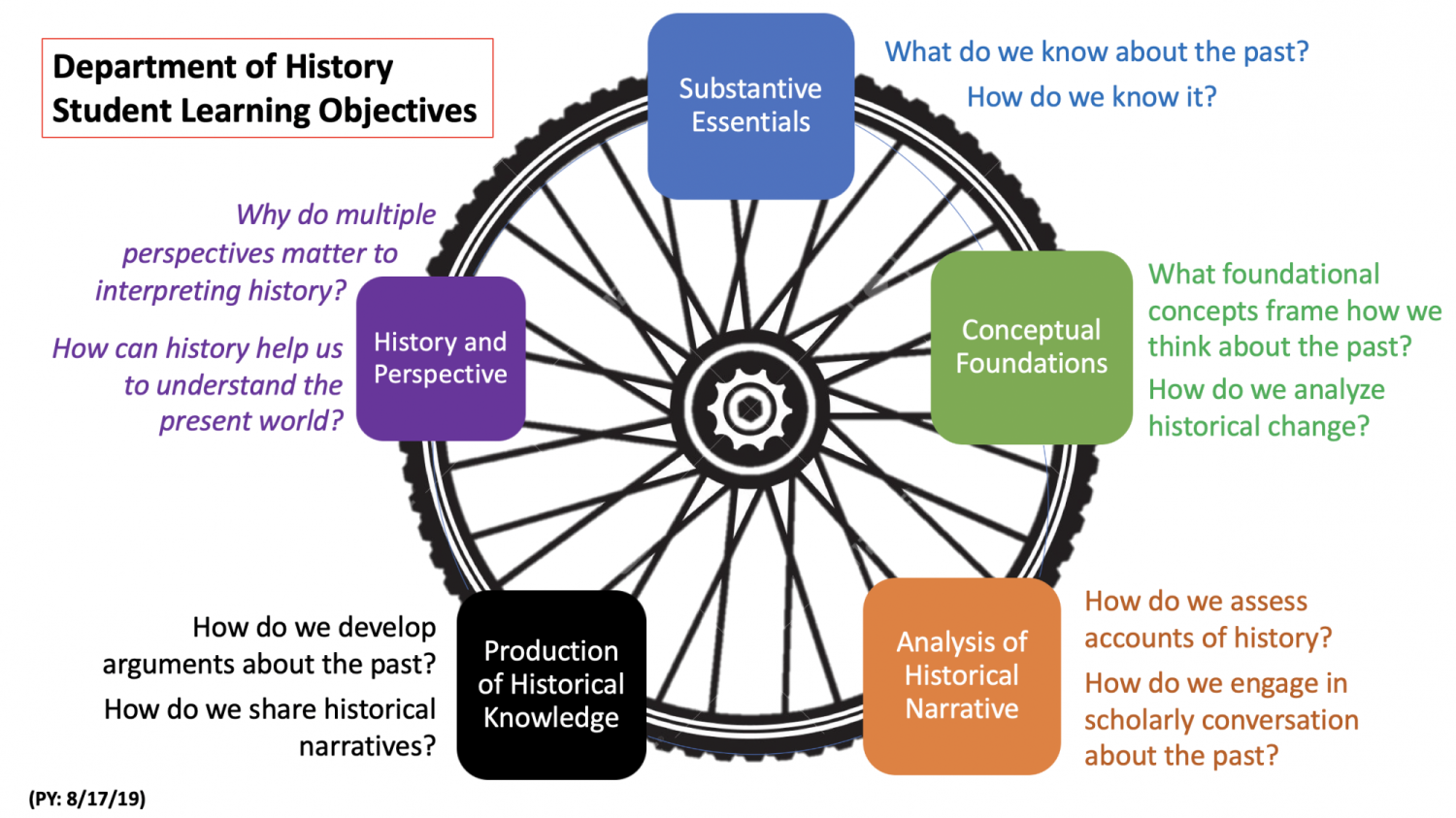Student Learning Objectives
Preamble: To study history is to develop a disciplined way of making sense of the world by inquiring about the past. The History Department has identified a common set of learning objectives that are crucial components of historical thinking. No single course will attend to all of the objectives listed below. Instructors identify learning goals specific to the course they are teaching, and so each course will reflect a unique combination of these broader objectives. However, taking multiple courses at increasing levels of difficulty during your time at CU Boulder will allow you to develop your proficiency in historical literacy--the substantive knowledge, skills, concepts, methods, and habits of mind specific to the discipline of history. These skills build upon and add to critical thinking skills shared across multiple disciplines, such as attentive reading, engaged discussion, recognition of multiple perspectives, and effective writing. Mastering each cluster of historical elements will allow you to develop a portfolio of analytical and communication skills that will serve you in and beyond the discipline.

SUBSTANTIVE ESSENTIALS
What do we know about the past? How do we interpret it?
1.1 Facts: Call upon substantial factual knowledge about the past.
1.2 Evidence: Understand that history is an evidence-based discipline that requires identifying reliable sources of information.
1.3 Questions: Ask rigorous and open-ended questions of historical evidence in order to interpret what happened in the past.
1.4 Context: Establish relevant context to relate historical facts and/or evidence to the time and place of their original existence.
CONCEPTUAL FOUNDATIONS
What foundational concepts frame how we think about the past? How do we analyze historical change?
2.1 Change over time: Understand how change over time, and continuity, shape narratives of the past.
2.2 Causation: Account for causation in explanations of historical change.
2.3 Contingency: Consider historical change as never preordained but dependent upon a set of prior conditions, actions, and events in human societies and the non-human world.
2.4 Complexity: Treat historical change as complex and not easily reduced to simple explanations or single variables.
ANALYSIS OF HISTORICAL NARRATIVE
How do we assess accounts of history? How do we engage in scholarly conversation about the past?
3.1 Argument: Recognize historical narrative as a form of argument, built from evidence and interpretation and open to rigorous questioning and critique.
3.2 Sources: Assess authors’ interpretations of sources (primary and secondary) as evidence in their historical narratives and arguments.
3.3 Methods: Identify how historians have used various sources and methodological traditions, including those drawn from other disciplines where relevant, to build their interpretations.
3.4 Historiography: Evaluate historical argument as part of a larger historiographical conversation among scholars who offer multiple and changing interpretations.
PRODUCTION OF HISTORICAL KNOWLEDGE
How do we develop arguments about the past? How do we share historical narratives?
4.1 Research: Conduct historical research, which includes: navigating libraries, databases, and archives; identifying, locating, and managing sources; and summarizing significant amounts of information.
4.2 Explain: Build historical explanations by evaluating, interpreting, and synthesizing historical evidence, and applying relevant theory and methods.
4.3 Express: Share historical knowledge and argument through written, oral, digital, and/or other forms of expression.
HISTORY AND PERSPECTIVE
Why do multiple perspectives matter to interpreting history? How can history help us to understand the present world?
5.1 Global Literacy: Develop in-depth knowledge of multiple regions, countries, cultures, and communities across the world, and the factors that have shaped their historical interactions and interconnections, sometimes at a global scale.
5.2 Diversity: Identify relevant categories of analysis to frame and explore questions that aim to deepen our understanding of the complexity, richness, diversity, and power dynamics within human experience in the past and present.
5.3 Public Application: Apply historical knowledge, skills, and habits of mind to the problems of the present world.

